
The stalked scarlet cup is a tiny red cup on a tiny white stalk. Grows on fallen wet sticks and branches in damp deciduous woods. May–June; later in cooler years. Cup shallow; outer surface white and smooth; inner surface scarlet. Stalk with equal sides; white. Spore print whitish cream. Spores magnified are elliptical, smooth, with one drop of oil at each end.
Lookalikes: The scarlet cup (S. dudleyi) has a larger cup (commonly 1½ to 2 inches across) and either a very short stalk or none at all. It appears earlier in the season than the stalked scarlet cup.
Cup width: ¼ to ⅝ inch; cup height: ⅜ inch; stalk length: ⅜ to 1¼ inches; stalk width: ⅟₁₆ inch.
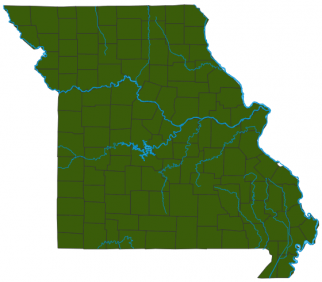
Statewide.
Habitat and Conservation
Grows scattered on fallen wet sticks and branches in damp deciduous woods. Although it is often overlooked, the stalked scarlet cup is easily identified by its bright red color, tiny white stalk, and very small size.
Status
Not edible.
Life Cycle
This species exists as a network of fungal cells (mycelium) within rotting wood. The mycelium obtains nourishment by digesting, and rotting, the wood. When ready to reproduce, the mycelium develops the cuplike mushroom outside the wood. Spores are produced in the lining of the cup and are released to begin new mycelia elsewhere. The mycelium can live for years.
Human Connections
Mushrooms decorate nature the way wildflowers do, adding to our pleasure on hikes. Stalked scarlet cups, though tiny, are a delight to see. They're cute!
Ecosystem Connections
Fungi are vitally important for a healthy ecosystem. This fungus feeds on dead wood, decomposing it. This cleans the forest and helps nutrients to cycle back into the soil—an unglamorous but vital role in the ecosystem.

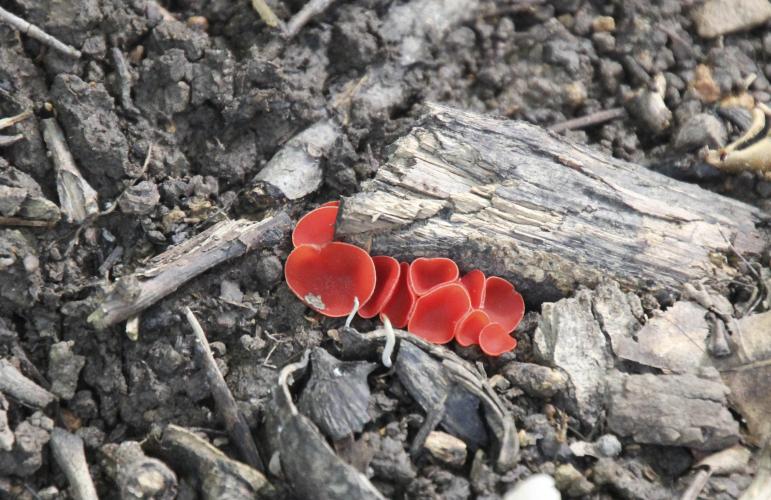

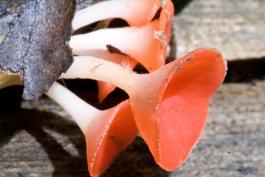
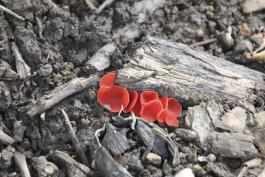
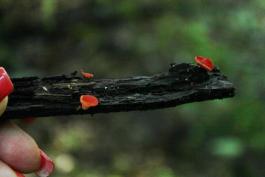
Mushrooms are a lot like plants, but they lack chlorophyll and have to take nutrients from other materials. Mushrooms are neither plants nor animals. They are in a different kingdom — the fungi. Fungi include the familiar mushroom-forming species, plus the yeasts, molds, smuts, and rusts.
Always be cautious when eating edible mushrooms. Be absolutely sure of the ID, and only eat a small amount the first time you try it to avoid a reaction..






















